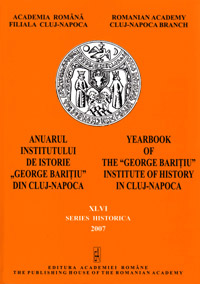Rezistenţa armată anticomunistă din Munţii Făgăraş - versantul nordic. "Grupul carpatic făgărăşan"/Grupul Ion Gavrilă (1949/50-1955/56)
The Anticommunist Armed Resistance in the Făgăraş Mountains, the Northern Versant/ Ion Gavrilă´s Group (1949/1950-1955/1956)
Author(s): Dorin DobrincuSubject(s): History
Published by: Editura Academiei Române
Keywords: Anticommunism; Resistance; Ion Gavrilă; Făgăraş Mountains; Stalinism; Repression
Summary/Abstract: One of the most important areas where anticommunist armed resistance acted was that of the Făgăraş Mountains – north side. After they acted, in 1948-1949/1950, in different subversive organizations, destroyed by the authorities, several young people from the towns and villages of the former Făgăraş county chose to flee in the mountains lying in the south of their region. The main advantage was offered by the geographical circumstances, here lying the most important massif in the country. The members of the group – which had different names: “Grupul carpatin făgărăşan” (Făgăraş Carpathians Group), “Grupul 73 Carpatin de eliberare naţională” (73 Carpathians Group for National Freedom), or simply Gavrilă Group (the Securitate used the name of “Gavrilă band) – were in their majority members of the Cross Brotherhoods, the youth organization of the Legionary Movement; they were university or high school students, but also blue-collar workers, farmers and foresters. The acknowledged leader was Ion Gavrilă. The fighters/partisans who actually wore the arms were few, even very few (11-14). They gradually learnt the tactics of the guerrilla war. They proved to be fair in their relationship to the civilians, a fact that even Securitate admitted in its numerous files. Given the partisans’ boldness and the fact they were shattering the Stalinist dogma of the absolute control upon the territory and population, the authorities brought there extremely numerous troops from the repressive structures. Securitate would admit somehow publicly, more than two decades after the neutralization of Gavrilă group, that this group and the Arnăuţoiu group (on the south side of the Făgăraş Mountains) were the ones against which the operative troops had carried on the “most complex and long-lasting actions”. The partisans succeeded in holding out for a few years, under very difficult circumstances. Without the locals’ help they could not survive but for a very short while. Hundreds and hundreds of people were maltreated, imprisoned and even killed because of the support they had offered to the resistance movement. The Securitate eventually infiltrated into the Făgăraş resistance group, as it happened in almost all cases we know in Romania. In 1955-1956, the armed members of the group were trapped and captured. They were tried, sentenced to death and executed at Jilava, where so many anticommunist resistance members from different places of the country died. The only one who escaped was Ion Gavrilă, who managed to hide for more than two decades. He was captured in 1976 and released after six months of investigations, as the facts had been prescribed.
Journal: Anuarul Institutului de Istorie »George Bariţiu« - Series HISTORICA
- Issue Year: XLVI/2007
- Issue No: 46
- Page Range: 433-502
- Page Count: 70
- Language: Romanian

